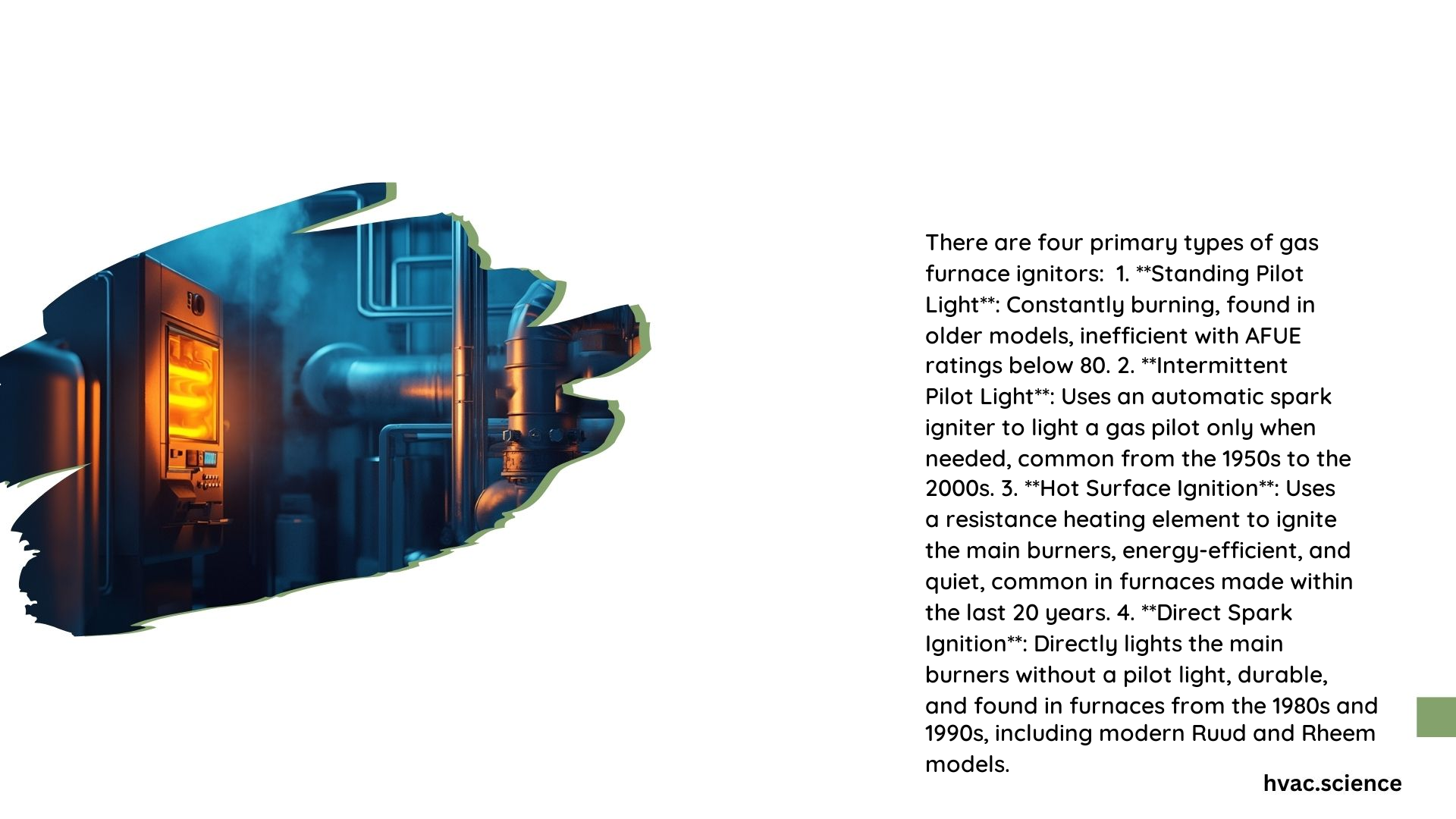Gas furnaces use various types of ignition systems to light the burners and provide heat. Understanding the different types of gas furnace ignitors can help homeowners identify issues, perform maintenance, and choose the right replacement part. This comprehensive guide explores the key types of gas furnace ignitors, their operational mechanisms, advantages, and disadvantages, as well as the steps for testing and replacing them.
What are the Types of Gas Furnace Ignitors?
1. What is a Hot Surface Ignition System?
Hot surface ignitors are typically made from silicon carbide or silicon nitride. When the thermostat calls for heat, an electrical current heats the igniter, causing it to glow red hot (around 2500°F) and ignite the gas burners. These systems are energy-efficient, quieter in operation, and do not require constant gas consumption like pilot lights. However, they have a limited lifespan of 3-5 years, are brittle and prone to cracking, and require careful handling to avoid damage.
2. What is a Direct Spark Ignition System?
This system uses an electric spark to ignite the gas at the main burners, eliminating the need for a pilot light. It is commonly found in furnaces from the 80s and 90s and some modern models. Direct spark ignition systems are long-lasting and efficient, but they are less common in newer models, and the spark mechanism can be noisy.
3. What is an Intermittent Pilot Light Ignition System?
This system uses a gas pilot light that is only lit when the furnace is called to heat. An automatic spark ignitor lights the main burners when needed. Intermittent pilot light ignition systems are more efficient than standing pilot systems but less efficient than hot surface ignitors. However, they are less common in modern furnaces.
4. What is a Standing Pilot Ignition System?
This is one of the oldest types, where a constant pilot light is kept burning to ignite the main burners when needed. Standing pilot ignition systems have a simple design but are highly inefficient, with constant gas consumption and less safety compared to other ignition systems.
How to Test a Gas Furnace Ignitor?

-
Visual Inspection: Check the ignitor for cracks or white spots on the carbide section. Observe the ignitor glowing when the furnace is called to heat. If it does not glow, it may be faulty.
-
Multimeter Test: Use a multimeter to measure the voltage and electrical resistance of the ignitor. Ensure it receives the correct voltage (usually 120V) and check for proper resistance values. A high resistance reading can indicate a crack forming.
-
Safety Precautions: Ensure the power to the furnace is off before any inspections or tests. Avoid touching the carbide surface of the ignitor, and use caution when handling it due to its brittle nature.
How to Replace a Gas Furnace Ignitor?
-
Compatibility Checks: Ensure the replacement ignitor is from the original manufacturer and matches the specifications (voltage, resistance, and surface area) of the original part.
-
Estimated Costs and Timeframes: The cost of a replacement ignitor can vary but is generally affordable (around $20-$50). The replacement process can take about 30 minutes to an hour if done correctly.
-
Steps for Replacement: Turn off the power to the furnace, locate and remove the old ignitor, install the new ignitor, and turn the power back on to test the furnace.
How to Determine the Suitable Ignitor Type?
-
Check the Furnace Model: Look for the identification label on the old ignitor or in the furnace manual to find the manufacturer, product numbers, voltage specs, and resistance values.
-
Compatibility Factors: Ensure the replacement ignitor matches the specifications of the original part to avoid compatibility issues.
Where to Locate a Gas Furnace Ignitor?
-
Suppliers: You can find replacement ignitors at HVAC supply stores, home improvement stores, or online retailers.
-
Service Providers: If you are not comfortable with the replacement process, it is recommended to hire a qualified HVAC technician.
Reference:
1. Accuview Inspections: Maintaining Your Furnace – Inspect Your Hot Surface Igniter
2. YouTube: HOT SURFACE IGNITOR Training for Gas Furnaces HSI
3. HVAC.com: Furnace ignitors: how do they work?
